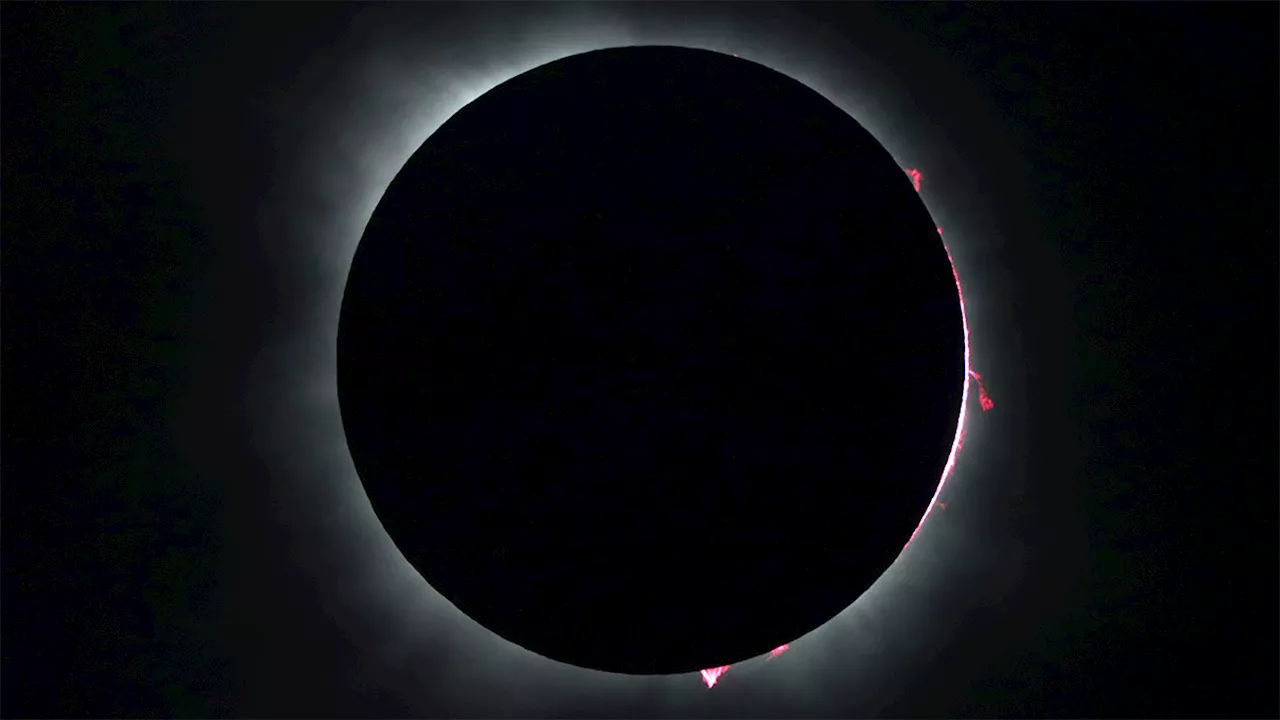Did you see those red blotchy areas around the sun during Monday's total solar eclipse? Those are called solar ejection prominences.
Those are called. Though they look like they could be made of fire, they are actually eruptions of plasma, a hot gas made of electrically charged hydrogen and helium, extending outward from the sun's surface.
Solar prominences flow along a magnetic field the sun generates and can last for several months. The prominences can extend into space as far out as 200,000 miles, nearly the distance between the Earth and the moon -- that's roughly 28 times the diameter of our planet.Total eclipse, taken outside the NBC 5/Telemundo 39 studios on Monday, April 8, 2024.
Prominences are anchored to the sun's photosphere, the lowest level of the sun's atmosphere, and aren't ejected into space. Solar flares, NASA said, are giant bursts of X-rays and energy that shoot from the sun into space at the speed of light. Traveling at that speed, solar flares can reach the Earth in about eight minutes where they can cause disruptions to satellites and communications in the Earth's atmosphere.are also ejected into space but are slower than flares and travel at about 5% the speed of light, or roughly 9,300 miles per second.
When the CME's cloud of electrically charged particles passes the Earth, some are drawn to the magnetic poles and interact with atoms and molecules in our atmosphere, causing the aurora borealis in the northern hemisphere and the aurora australis in the southern hemisphere.
Solar Eclipse Total Eclipse 2024
Indonesia Berita Terbaru, Indonesia Berita utama
Similar News:Anda juga dapat membaca berita serupa dengan ini yang kami kumpulkan dari sumber berita lain.
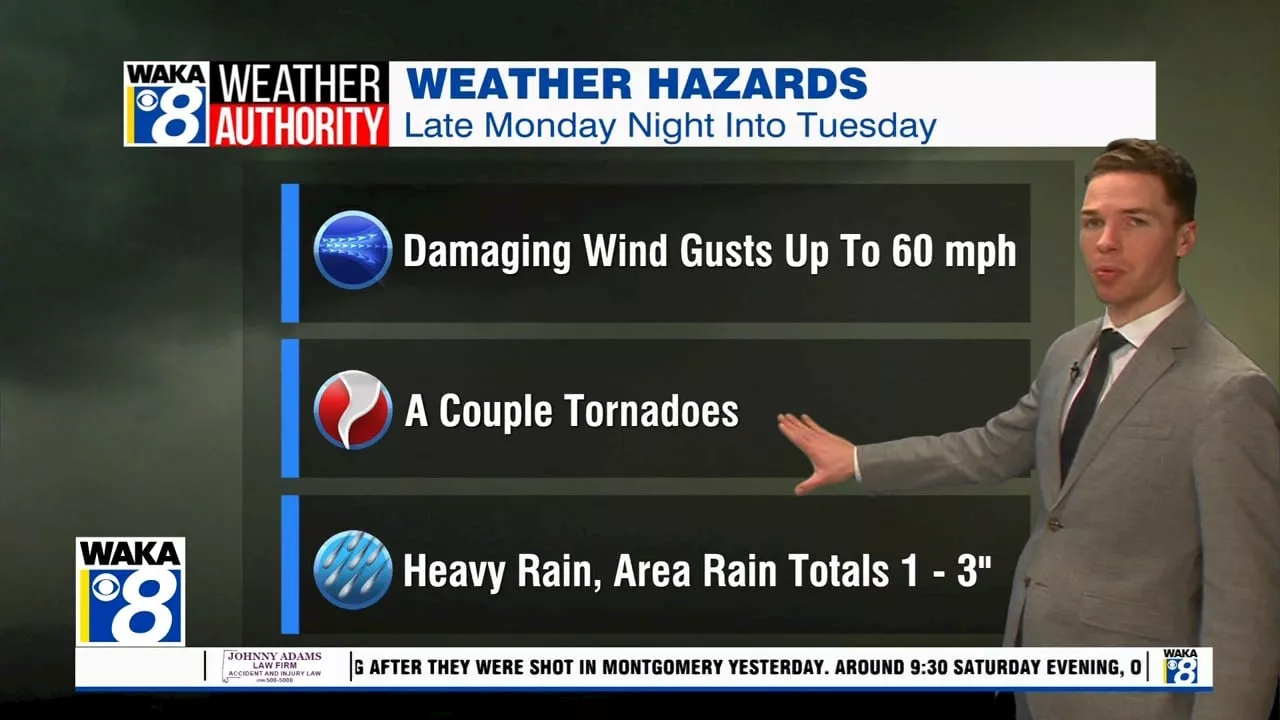 Mainly cloudy, windy Monday; Rain, storms late Monday nightMontgomery, Alabama
Mainly cloudy, windy Monday; Rain, storms late Monday nightMontgomery, Alabama
Baca lebih lajut »
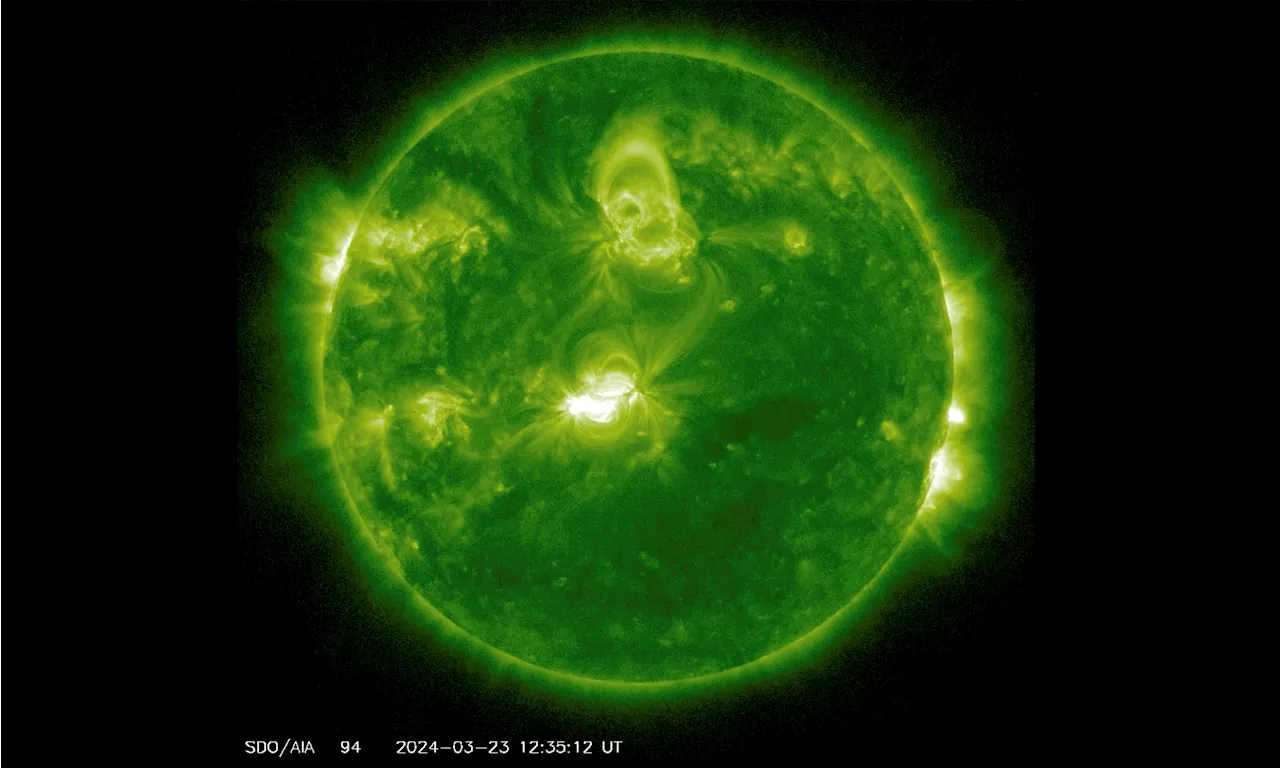 Geomagnetic storm from a solar flare could disrupt radio communications through MondaySpace weather forecasters have issued a geomagnetic storm watch through Monday, saying an ouburst of plasma from a solar flare could interfere with radio…
Geomagnetic storm from a solar flare could disrupt radio communications through MondaySpace weather forecasters have issued a geomagnetic storm watch through Monday, saying an ouburst of plasma from a solar flare could interfere with radio…
Baca lebih lajut »
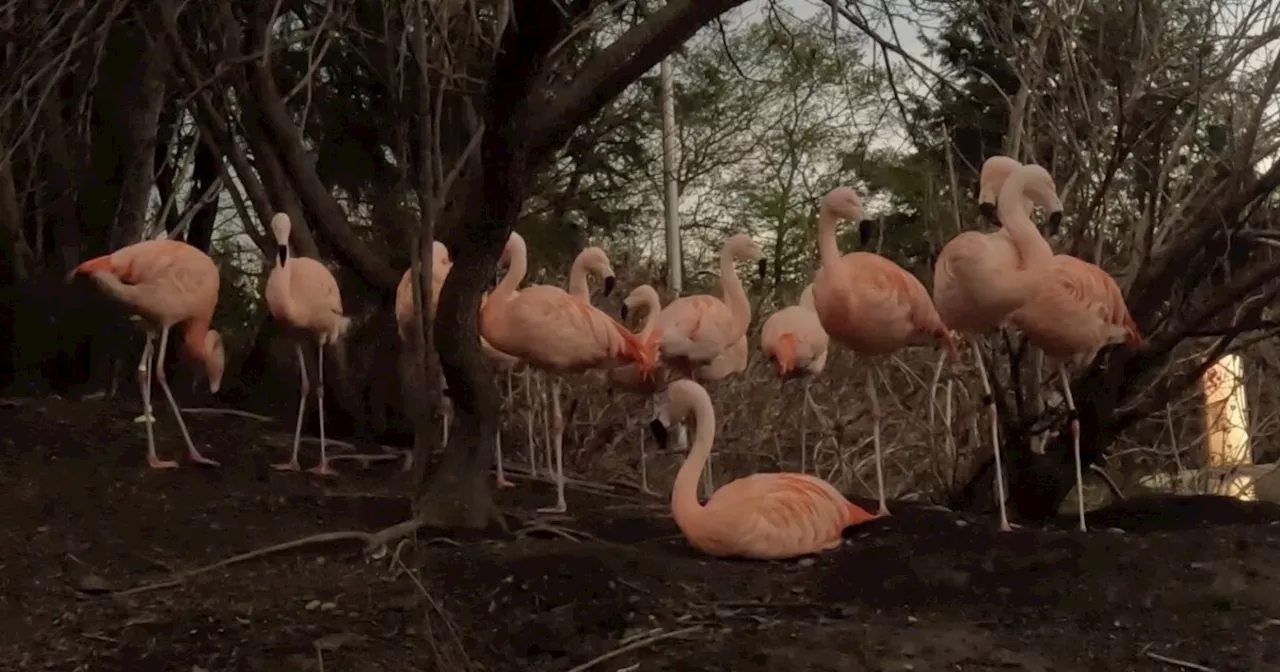 How did zoo animals react to Monday's total solar eclipse?Justin Boggs is a writer for the E.W. Scripps company. Justin covers anything from politics to sports and entertainment.
How did zoo animals react to Monday's total solar eclipse?Justin Boggs is a writer for the E.W. Scripps company. Justin covers anything from politics to sports and entertainment.
Baca lebih lajut »
 Solar eclipse darkens skies across 15 states Monday; when's the next one?The much anticipated solar eclipse cast darkness across a narrow swath of the United States Monday afternoon. It was all eyes to the skies as it spanned 15 states from South Texas to Maine. It started at 1:27pm central in Del Rio, Texas where unfortunately, there was cloud cover spanning most of the Lone Star State.
Solar eclipse darkens skies across 15 states Monday; when's the next one?The much anticipated solar eclipse cast darkness across a narrow swath of the United States Monday afternoon. It was all eyes to the skies as it spanned 15 states from South Texas to Maine. It started at 1:27pm central in Del Rio, Texas where unfortunately, there was cloud cover spanning most of the Lone Star State.
Baca lebih lajut »
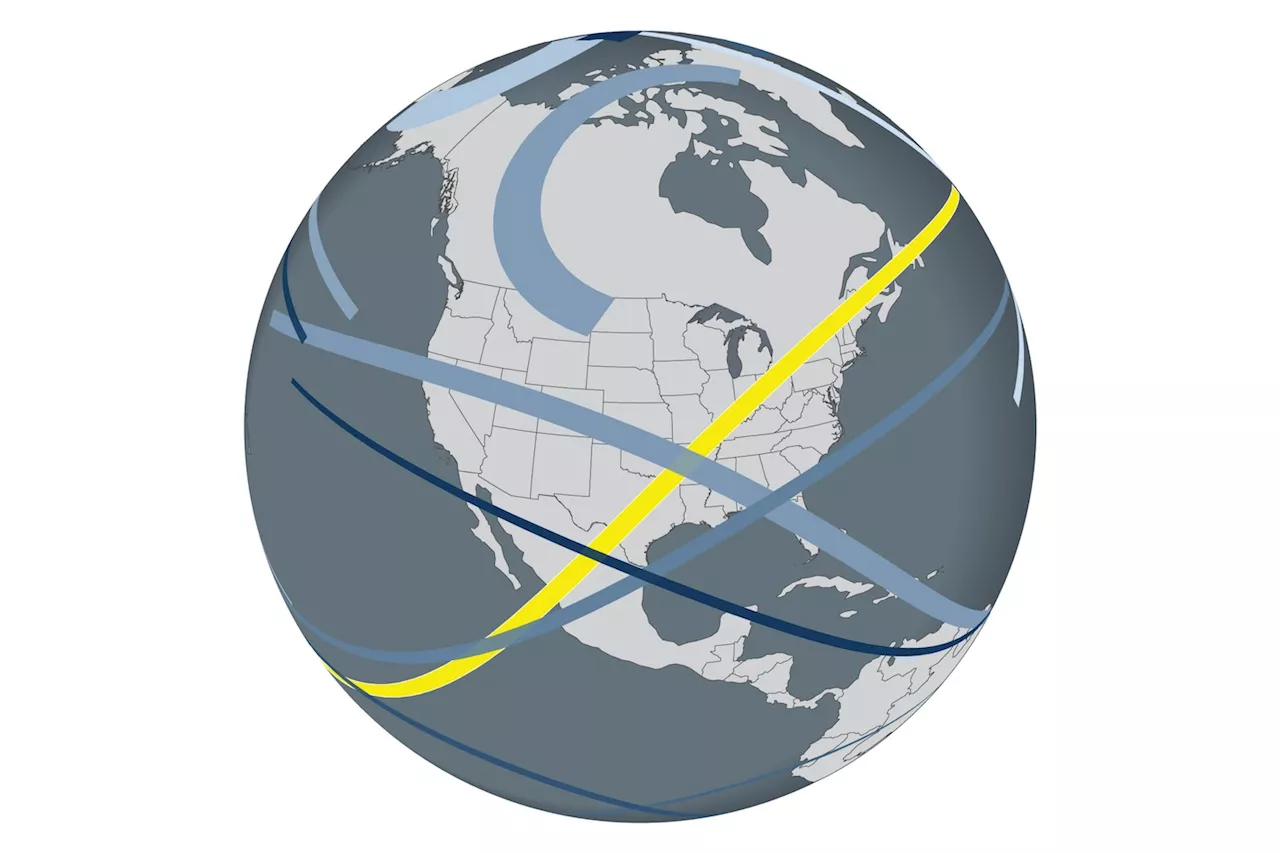 If you missed Monday’s solar eclipse, it’s a long wait until the nextA total solar eclipse won’t pass through the contiguous United States again until 2044. But, the next one is in 2026 if you’re willing to travel overseas.
If you missed Monday’s solar eclipse, it’s a long wait until the nextA total solar eclipse won’t pass through the contiguous United States again until 2044. But, the next one is in 2026 if you’re willing to travel overseas.
Baca lebih lajut »
 Your SoCal Weather Report For Monday, April 8: Sunny And Warm On Solar Eclipse DayGillian Morán Pérez is an assistant producer for LAist 89.3.
Your SoCal Weather Report For Monday, April 8: Sunny And Warm On Solar Eclipse DayGillian Morán Pérez is an assistant producer for LAist 89.3.
Baca lebih lajut »
